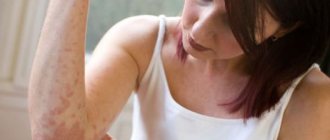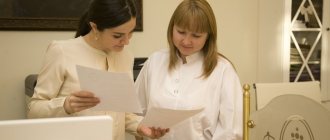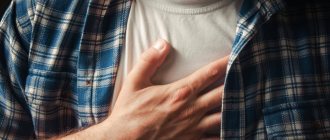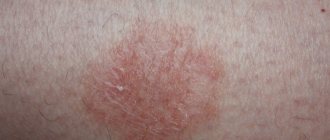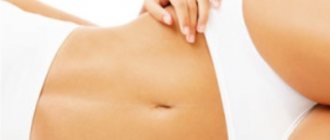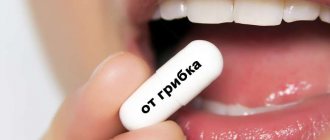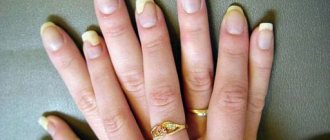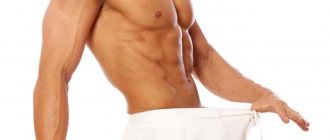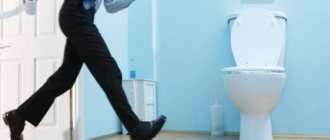Before talking about medications used to treat lichen, you should define what “lichen” is. We can say that this is practically not a diagnosis. This is a colloquial, everyday name for various skin diseases that manifest themselves in the form of small itchy nodules, or well-defined spots, sometimes of an inflammatory nature.
A variety of skin diseases can be called lichen. Here's an example:
- allergic eczema is sometimes called weeping eczema;
- herpes zoster, a viral disease called shingles;
- non-contagious psoriasis, which occurs quite often in the population, can be called lichen planus.
Separately, there are such varieties as ringworm and multi-colored lichen. They are classified as contagious fungal diseases. Finally, there are diagnoses where the word “lichen” is officially included in the name of the diagnosis. An example is lichen planus, or lichen ruber planus, as well as Zhiber's lichen. These, on the contrary, are not contagious diseases at all, and can appear or disappear without any apparent reason. Thus, methods for treating viral skin diseases, fungal infections, non-contagious dermatoses, eczema, and many other diseases should be combined in one material.
If we are talking about medicines for lichen, then here we could list all the pharmacology that is used to treat skin diseases, and the material would be extremely large. Therefore, to make things easier, we will describe the main classes of topical medications that are used for various forms of dermatoses, which can be called lichens.
Thus, we will look at drugs to combat fungal infection, drugs that produce maximum anti-inflammatory effects or hormonal drugs, and skin care products. These may include local mash, powders, ointments and creams that have a drying, astringent, or, conversely, moisturizing effect.
In the case of lichen, the reader should be warned that the diagnosis after a full examination is made by a dermatologist, and if the reader does not go to the doctor in a timely manner, he may engage in risky self-medication. As a result of such manipulations, the problem can be seriously aggravated and the existing disease can become chronic and intractable. An example is shingles caused by a fungal infection that is mistaken for psoriasis or eczema. The patient was too lazy to go to the dermatologist and take tests for mycelium and spores of the fungus. He decided that a potent hormonal ointment would be enough. As a result of the uncontrolled use of hormones, the local immunity of the skin was so reduced that the fungal infection spread over a much larger area, and at the same time the skin lost the ability to respond to any drugs other than potent hormones.
Therefore, this material is intended for those patients who know exactly what type of lichen they have, and this information should be used as a reference guide. So, if the doctor prescribed the Patient cream or ointment of terbinafine or Lamisil, then you can see what similar drug can replace Lamisil if it is not possible to get to the doctor and ask a specialist. The rating of drugs for the treatment of lichen indicates a price range. It is relevant for July 2021, for pharmacies of all forms of ownership on the territory of the Russian Federation.
Types of drugs for lichen
The choice of medication depends on the type of pathology, the causes of which are different:
| Type of lichen | Pathogen/Cause |
| Pityriasis (multi-colored) | Yeast-like fungi Pityrosporum orbiculare, Pityrosporum ovale, Malassezia furfur |
| Shearer | Dermatophyte fungi Trichophyton, Microsporum |
| girdling | Varicella-zoster virus |
| Pink | Presumably an allergy, a virus. |
| Red flat | It is unclear exactly: stress, infections, allergies, metabolic disorders, genetic predisposition. |
All remedies for lichen belong to two groups:
- Local preparations: sprays, creams, suspensions, ointments, solutions.
- Oral medications: capsules, drops, tablets for internal use.
First, external medications are used; if they do not work, tablets are prescribed. Depending on the type of lichen, the following groups of drugs are used:
- antiviral;
- antifungal;
- antihistamines;
- immunomodulatory;
- bacterial antibiotics.
Vaccinations against skin pathologies are not given to people; the vaccine against lichen is used only to treat animals in order to speed up the course of the disease. It is used only in Russia; other countries have refused vaccination.
Symptoms when you should stop taking the pills
Many people confuse an allergic reaction with lichen. In some cases, allergies appear within a few minutes. Depending on the reaction, a nodular rash appears. The affected area has no clear boundaries, and the skin becomes red and inflamed.
If you notice such a rash, you should stop taking medications incorrectly and consult a dermatologist. When treating ringworm tablets, the basic principle should be the saying “do no harm.” Before you begin to remove lichen from the human body, you need to find out the cause of its causative agent.
Antifungal drugs
Prescribed for the treatment of ringworm and pityriasis versicolor. Some of the drugs act on different types of parasites, others destroy a specific type of fungus. Some medications are produced both in the form of tablets for internal use and in the form of ointments for external use.
Medicines for ringworm
This type of skin infection is treated with the following medications:
- “Griseofulvin” Tablets for ringworm : stop the proliferation of fungi, the active component accumulates in the skin, nails, and hair. Dosage depends on weight. Initially, take 3 times a day, wash down with a spoon of vegetable oil. If the scraping analysis shows a negative result, then the dosage is reduced. Treatment is long-term – up to 2 months. The drug is not recommended for pregnant women and children under 2 years of age.
- “Orungal” The medicine destroys the membranes of fungal cells, accumulates in the upper layers of the skin and is removed along with keratinized particles after exfoliation. Available in the form of capsules and solution. Take 2 capsules 1 time per day. The course lasts 1 week. Not prescribed to people with liver, kidney, or heart diseases.
- "Fulcin" Antifungal antibiotic. Before treating a person's lichen with this drug, they check for an allergic reaction to the drug. The daily dose, 500 mg, is taken whole or in parts. The duration of treatment depends on the location of the lesion: from 2 weeks to 6 months, in severe cases up to a year.
- "Lamisil" Acts on different types of fungus. The active ingredient is terbinafine. The daily dose of 250 mg is taken once a day at night. The duration of therapy depends on the degree of damage and the type of fungus: from 2 weeks to 3 months. Not recommended for children weighing less than 12 kg. The medicine is also produced in the form of a cream: rubbed twice a day until recovery.
- "Thermikon" Cheaper analogue of "Lamisil"
Medicines for pityriasis versicolor
This type of skin pathology is also activated by fungi. Some drugs from the previous list are suitable for its treatment: Orungal, Lamisil, Thermikon. Other tools are also no less useful:
- "Itraconazole" Destroys many types of fungus. The daily dose is 200 mg - taken daily in one dose. Course duration is 1 week.
- "Mycozoral" The active ingredient is ketoconazole. Complex effective remedy for lichen : destroys yeast-like fungi, pathogens of microsporia and trichophytosis. Take one tablet 4 times a day, the duration of administration is determined by the doctor. The medicine is also produced in the form of an ointment: it is applied once a day. Treatment lasts up to 4 weeks.
- "Fluconazole" Available in capsules. Stops the proliferation of fungi. Take 2 capsules (300 mg) per week for 2 to 4 weeks. The medicine is contraindicated for women during pregnancy.
- "Nystatin" An antifungal agent that is prescribed for cases of infection of the skin, mucous surfaces of the mouth, and pharynx by yeast-like fungi. The course lasts 10–14 days. Take 3-4 times a day, the dosage is individual - depends on the location of the lesion. They also produce an ointment that is approved for use during pregnancy.
- "Pimafucin" The drug is destructive to many fungi. Treatment lasts a week: take a tablet 4 times a day. In the form of an ointment, this medicine for lichen is approved for pregnant, lactating women and newborn children.
The duration of treatment in each case is determined by the doctor. It is not recommended to abandon the prescribed drug immediately after the first signs of improvement.
How to choose an aerosol?
The choice of the most suitable spray for the treatment of multicolored lichen is made by a dermatologist after examining the patient and making a diagnosis.
When prescribing a drug, factors such as:
- patient's age;
- stage of the disease;
- degree of severity of clinical symptoms;
- presence of contraindications;
- the presence or absence of concomitant diseases.
Important!
Despite the fact that you can purchase a spray at a pharmacy without a doctor’s prescription, you should consult a specialist before purchasing the product.
Precautions for use
In order for the use of the spray to bring quick and positive results, it is important to follow certain rules and precautions - this will allow you to get rid of the dermatological disease without causing undesirable consequences.
The following recommendations will help make treatment with sprays as effective as possible:
- The active or auxiliary components included in the medicinal solution can cause a severe allergic reaction. For this reason, before applying them to the skin, you must carefully read the composition to make sure that there is no individual intolerance to certain substances.
- The medicinal liquid is applied to the previously cleaned and towel-dried area of the skin affected by yeast-like fungi. The drug does not require additional distribution or rubbing.
- Treatment of infected skin is carried out by several short presses on the spray bottle. The bottle should be held strictly vertically.
- The product must be applied carefully to prevent it from coming into contact with the mucous membrane of the eyes or mouth. If the medicine gets on the mucous membrane, rinse the area well with running water.
- Most medications have a number of side effects and contraindications for use. Manufacturers indicate this information in the instructions for the medication, which must be studied before treating the skin.
Treatment of pityriasis versicolor in humans using pharmaceuticals intended for external use is carried out under the supervision of the attending physician .
Self-prescription of drugs is unacceptable, since incorrectly selected medications, dosage and treatment regimen can lead to the development of complications.
Antiviral drugs
Used for pink and herpes zoster. If medications are taken no later than 72 hours after the onset of the disease, you can quickly cure lichen and avoid complications.
- “Acyclovir” acts selectively only on cells infected with the virus. The course lasts 5 days: take 4 tablets every 6 hours, taking a break at night. For children, the dosage is individual, depending on body weight. Acyclovir is also available in ointment form.
- "Valtrex" Take 1000 mg 3 times a day for a week. The medicine is not recommended for people with kidney and liver diseases.
- "Valacyclovir" Take for a week: 1000 mg every 8 hours. Duration of taking the drug is 1 week. Children under 12 years of age are contraindicated; older people are advised to drink plenty of fluids.
- "Famvir" The daily dose, 750 mg, is taken immediately or in parts throughout the day. The duration of taking the medicine is 7 days. Analogues: Minaker, Famciclovir-Teva, Famacivir, Familar.
Ancillary drugs
The causes of pink and red lichen planus have not been precisely established - there are only assumptions. Some medications help to significantly alleviate a person’s condition and remove lichen .
Antihistamine tablets.
They relieve allergy symptoms if the lesions are accompanied by itching and irritation. These include:
- Loratadine;
- Suprastin;
- Tavegil;
- Cetrin;
- Cetirizine;
- Fexadine.
Take the tablets before bed, in courses of 2 weeks.
Antibiotics
These drugs do not treat lichen; they are prescribed for severe cases of the disease, when ulcers form and there is a risk of infection. Broad-spectrum antibiotics are usually used; they stop the proliferation of bacteria, relieve inflammation and swelling:
- Erythromycin;
- Tetracycline;
- Metacycline;
- Oleterin.
The dosage and duration of therapy is determined only by the doctor. If you do not follow the specialist’s recommendations, the antibiotic will stop working and the treatment will be in vain. It is usually advised to take the medicine at a certain time.
Immunomodulators
Prescribed as an adjuvant that helps to quickly cure lichen in humans . Drugs increase the body's resistance or, conversely, smooth out the negative consequences of the immune response to the disease:
- “Polyoxidonium” is used as an immunostimulant for fungal, viral, and bacterial infections. Application: dissolve 1 tablet (12 mg) 3 times a day.
- "Cycloferon" Promotes the production of interferon, which speeds up recovery. The daily dose is 450 mg - 3 tablets taken at one time. Course – 40 tablets.
- "Delagil" The active ingredient is chloroquine. Used as an immunosuppressive anti-inflammatory drug for lichen planus in humans . Daily dose 0.4 g
- “Immunal” A remedy for strengthening the immune system based on echinacea. Take a tablet 3 times a day for at least a week. Analogs: Immunorm, Echinacea, Estifan,
- "Likopid" A new generation immunostimulant drug. Use 2 mg 2 times a day.
- "Planquenil" Anti-inflammatory, immunosuppressive drug for the treatment of lichen planus. Initially, the daily dose is 400 mg, after improvement it is reduced to 200 mg. Take in 1 or 2 doses.
Sprays
They are used only externally for different types of lichen. The active component of most of these drugs is terbinafine, which destroys dermatophytes, yeast-like fungi. First, the skin is cleaned and dried, then this anti-lichen remedy is sprayed onto the affected areas, including healthy parts of the skin. Adverse reactions most often include itching, peeling, irritation, and redness, which disappear after stopping use.
In pharmacies you can find sprays with the following names:
- Lamicon;
- Lamisil;
- Terbinafine;
- Fungoterbin;
- Thermikon;
- Miconazole;
- Kanesten.
The dosage of the drugs is not specified exactly; most often, the anti-lichen spray is sprayed until the skin becomes damp. Usually used 2 times a day. The improvement is noticeable in the first days, but the drugs should be used until complete recovery. Not recommended for women during pregnancy, people with kidney and liver diseases.
Pharmacodynamics and pharmacokinetics
Let's consider the pharmacodynamics and pharmacokinetics of sprays against lichen using the example of the popular drug "Thermikon".
Terbinafine hydrochloride, which is an allylamine found in most ringworm sprays, has excellent antifungal activity. Due to the fact that this component has a destructive effect on the biosynthesis of cell membranes of fungi (Trichophyton violaceum, Trichophyton mentagrophytes, Trichophyton tonsurans, Trichophyton rubrum, Microsporum canis, Candida albicans, Gardnerella vaginalis, Bacteroides) in the early stages, ergosterol deficiency occurs. This helps to accumulate squalene inside the cell. It has a detrimental effect on fungi.
Since the spray is used only externally, the systemic absorption of the drug is insignificant - about 5% of terbinafine. Therefore, we can talk about the minimal systemic effect of the drug.
Auxiliary external preparations
Solutions, pastes, and suspensions are used not only to destroy lichen pathogens, but also as antiseptic and regenerating agents. Preparations in the form of solutions are convenient for treating lichen on the head - unlike creams and ointments, they do not contaminate the hair and are quickly absorbed. On smooth areas of the skin they are used before applying other external products.
- Clotrimazole. Antifungal solution: used to treat pityriasis versicolor, ringworm. Rub a few drops into the affected areas 2 times a day.
- Yodicirin. A solution based on iodine and glycerin peels off scales, restores the skin, and leaves no marks. Apply a swab moistened with the medicine for half an hour.
- Vokadin. An antiseptic solution based on iodine, used for damage to the mucous membranes. Dilute 5 ml of the product in half a glass of water and rinse your mouth.
- Fucoricin. Antifungal, antimicrobial solution: wipe the affected areas 1 – 2 times a day before applying the ointment. Not prescribed to women during pregnancy. to treat lichen on the face with this drug - it turns the skin red.
- Sangviritrin. Antimicrobial solution. Wipe 1 – 2 times a day.
- Tsindol. Antiseptic, drying suspension, used in the treatment of pityriasis rosea.
- Pasta Lassara. A comprehensive remedy for dermatological diseases, which is more than 100 years old. The active component, salicylic acid, eliminates inflammation and promotes skin restoration. Apply 2 – 3 times a day.
- Lamisil. Gel, lotion against fungi. After application, it forms a film that lasts for 3 days.
Pharmacies provide a huge selection of drugs to combat skin diseases, but only the doctor determines how to treat lichen . Independent actions will not help with this, but will only harm.
Features of fungal skin infections in humans
The symptoms of ringworm depend to some extent on the individual's ability to cope with pathogens, as well as the location of infection.
With superficial lichen localized on the scalp, the following features of fungal skin infection can be observed:
- rounded local or multiple lesions with severe hair thinning;
- peeling skin similar to dandruff;
- when lichen microorganisms actively multiply, the hair begins to break, as a result of which it looks cut 2 mm from the skin;
- the edges of the affected area are outlined by small blisters;
- after the bubbles burst, a yellowish crust appears in their place;
- the infected areas of the skin are quite large, reaching over 10 cm in diameter;
- with lichen there is almost no itching, or it is mild and does not cause discomfort.
The most severe discomfort experienced by a person infected with ringworm is psychological, since the appearance suffers significantly.
With ringworm affecting smooth skin, areas of infection can be observed throughout the body, including the hands, face, and feet.
The disease can bother a person for several years, moving from the stage of remission to the stage of exacerbation. With cutaneous lichen, the symptoms are as follows :
- bright, clearly defined spots all over the body;
- the borders of the spots are slightly raised above the skin and look like a roller formed from pink papules;
- if the disease is ignored, the spots grow quickly;
- the patient suffers from severe itching.
Important!
The favorite location of superficial lichen is the smooth skin of the face and neck; lichen is less common on the lower extremities.
An interesting feature of ringworm is that boys are more susceptible to the disease than girls . However, if lichen is not treated, it goes away on its own in boys during adolescence, but in girls it turns into a sluggish chronic form.
In adulthood, in women, due to malfunctions of the ovaries, thyroid gland, and weakened immunity, lichen appears again.
Symptoms of chronic ringworm are the same as with primary infection:
- round spots appear on the scalp and on smooth skin, on the nail plates;
- in the affected areas the hair breaks at the root;
- affected areas provoke severe itching and peeling, exfoliated skin has a gray or white color;
- the affected nail plate changes color to gray, the nail crumbles, breaks, thickens, or, conversely, becomes thinner.
